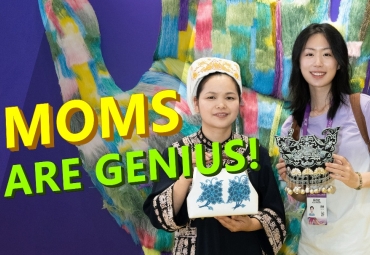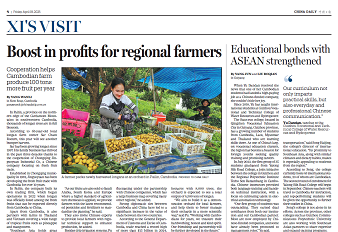For China, rising tides lift all boats
In China, when you look out on a seemingly unspoiled vista, it can be easy to forget that the landscape you're admiring may in fact have been inhabited for centuries.
These are places that haven't seen the breakneck growth of other provinces for one reason or another. Maybe their geographic features weren't conducive to urbanization or rapid industrialization. Maybe there were cultural factors at play.

Whatever the explanation, now is the time for these regions to catch up to their forebears and attain a comparable standard of living. This is easier said than done, however. Many villages and counties have maintained their lifestyles for generations. A similar phenomenon exists elsewhere - and gives us an idea of what not to do.
In the United States, there were "company towns", whole towns that were literally owned and built by a company in a particular industry - coal mining, for example. When the company went out of business, the population lost its primary source of employment. There were no public programs to absorb the resulting shocks to local economies; governments left the people to the whims of the market. Left in the lurch, workers in these areas scrounged for whatever jobs they could find - or exited the labor force entirely.
China, it seems, is writing a different story. Rather than pulling the rug out from under people who have known one way of life for eons, the government is easing rural populations toward a more advanced economy.
The principle of coordinated development is in full effect here. Some places are building on pre-existing trades or cultural practices, while others are retraining for new industries with new skills. Methods may vary, but the results are the same: Villages and counties are discovering their strengths, leveraging them into growth and productivity.
Everywhere you look, you can find examples - in Guizhou province alone, there are several. Meitan county's renowned teas have buyers all over China. Maotai town has turned its trademark baijiu liquor into one of the world's biggest alcohol brands. Villages are finding new markets for their local crafts. Many are boosting their tourism potential, attracting swaths of visitors both foreign and domestic. All this happens with assistance from the government, through subsidies, incentives or official recognition via intangible cultural heritage lists.
Higher growth numbers are welcome, of course, but all this would mean little if the people themselves weren't benefiting. Happily, I can say they are. These popular, specialized trades are distributing gains downward and lifting impoverished groups into economic stability and safety.
Seeing this firsthand makes me think the US could use a little of this sort of know-how in its Rust Belt.
Contact the writer at ian_sg@chinadaily.com.cn
A man lies on bamboo poles in a river in Chishui, Guizhou province, on Tuesday. Local people began to use bamboo poles as a means of transport about 1,000 years ago. The technique was added to the provincial intangible cultural heritage list in 2009.Yang Jun / China Daily |
(China Daily 07/26/2018 page4)
All rights Reserved. 京ICP备13028878号-8








 Overview
Overview Guiyang
Guiyang Guian New Area
Guian New Area Liupanshui
Liupanshui Anshun
Anshun Qianxinan
Qianxinan Qiandongnan
Qiandongnan Qiannan
Qiannan Zunyi
Zunyi Tongren
Tongren Bijie
Bijie Guizhou commits to culture preservation and rural vitalization
Guizhou commits to culture preservation and rural vitalization Guizhou voice at 2025 national two sessions
Guizhou voice at 2025 national two sessions Meet the 'genius moms' at Shenzhen cultural fair
Meet the 'genius moms' at Shenzhen cultural fair 

